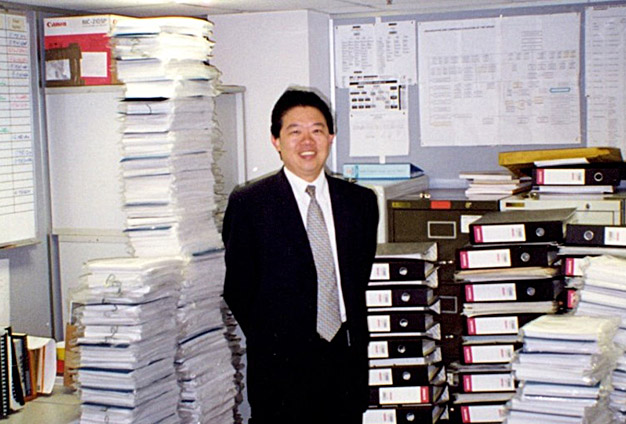

In law enforcement, we need to think through and act fast. I must also admit that sometimes, luck is also important. There was this intriguing investigation concerning the chairman of a listed company who had used a false consultant contract to defraud the company of $50 million, contrary to the Prevention of Bribery Ordinance. After investigating the case for two years, the ICAC mounted an operation. I headed a team to arrest the chairman at the border checkpoint when he returned to Hong Kong from the Mainland. Unfortunately, we lost track of him after his car crossed the border. Shortly afterwards we spotted the vehicle, only to find that the chairman was missing. We knew he was due to attend an important meeting in his office that day, and so we hoped to track him down somewhere near his office. We rushed to the building and entered the lift. Just when the lift doors were about to close, a man holding a cup of coffee pressed the lift open and entered. And we got our prey without a sweat.
The $1.8 billion Guangnan credit fraud case gave me an opportunity to demonstrate my skills as a legal counsel. On a number of occasions, as the Chief Investigator in charge of the investigation, I was required to appear at magistrates’ chamber hearings to argue with lawyers representing various suspects who wanted to have their travel documents returned to them. I happened to prevail in all such proceedings as all their applications were denied. In addition, we obtained full cooperation from the authorities on the Mainland in the course of obtaining evidence from witnesses and successfully convicted 15 defendants.
I can’t end my reminiscence without mentioning the Carrian saga which spanned 17 years – the longest investigation in the ICAC’s history. It also broke various records, including $6.6 billion problematic loans involved in the case, about four million pages of exhibit documents, and the seven-year long extradition. With my investigative experience amassed over the years, still one thing puzzled me: when the amounts of suspected bribe payments were divided by 101, they always resulted in round figures. I made a breakthrough when I connected the figures to the standard one per cent commission then payable in every subscription of newly listed stocks and deduced that the bribe monies might have been laundered through investment in newly listed stocks. The investigation sent six persons, including the then chairman of Carrian, to jail.